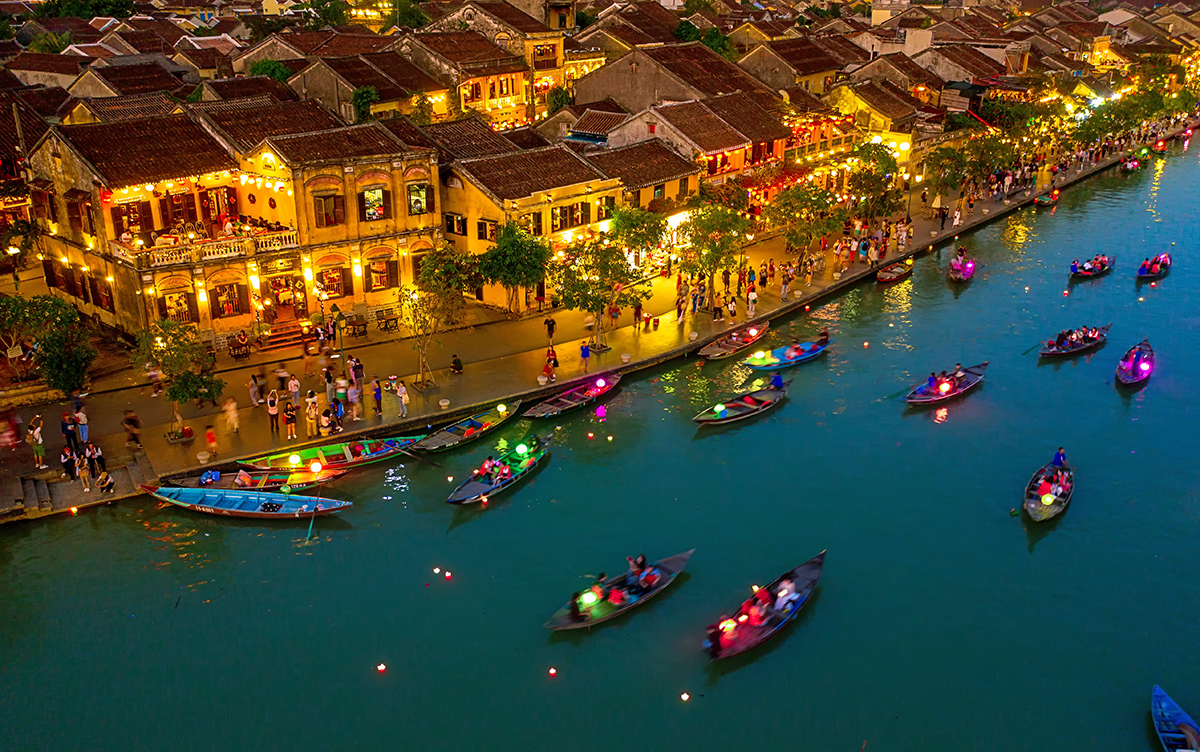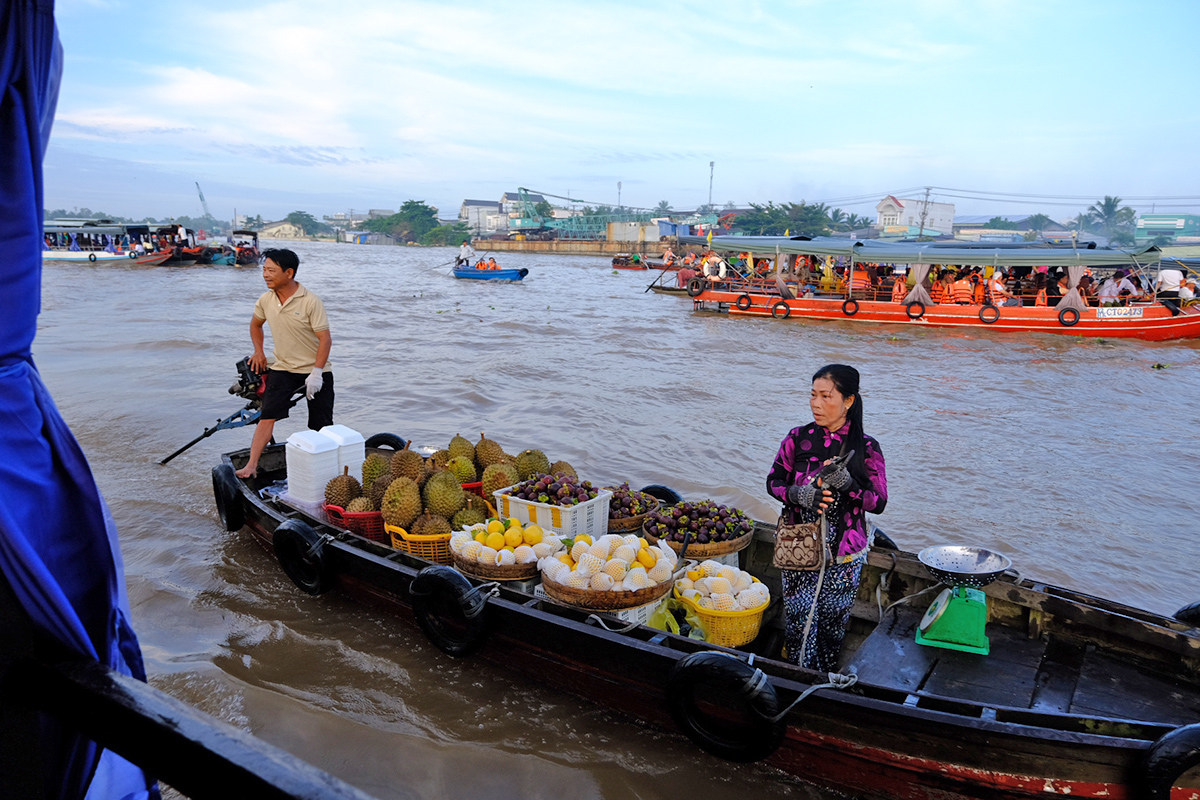(TITC) - This is an indication of International travel website Traveldudes in an article “Explore Vietnam: A Journey Through Time and Tradition”.
Vietnam is a destination possessing a rich and diverse treasure trove of cultural heritage and natural resources. This has brought about the precious landscape, people and traditions of the nation that are preserved to this day, stated Traveldudes.
Vietnam's history has gone through thousands of years of history. Therefore, Vietnamese culture is a combination of ancient indigenous traditions and influences from neighbouring countries. The country's rich and diverse cultural heritage is found in the architecture, art, music and festivals that still exist today. These are namely the Temple of Literature - Quoc Tu Giam in Ha Noi, the Forbidden Citadel in Hue, etc. Among that Hoi An Ancient Town - a world heritage destination recognized by UNESCO, it is a living testament to architecture in Vietnam. Strolling through the lantern street, visitors can feel like they have returned to the ancient times of the country.

Hoi An Ancient Town (Photo: Collection)
In addition, Vietnamese art forms such as water puppetry, silk painting and lacquer painting also carry strong cultural imprints. In particular, water puppetry has become an attractive art form since the 11th century and is still popular today. Featuring wooden puppets performing on the water floor, each story helps audiences feel like they have stepped out of the world of Vietnamese fairy tales.
Vietnamese performing arts, combining music and performance, is a long-standing cultural identity of Vietnam. Traditional musical instruments such as the monochord and zither create unique traditional melodies, helping listeners experience the country's typical traditional music. Meanwhile, the performances represent stories about the nation's rich history.
In addition, festivals in Vietnam are an opportunity to preserve the nation's cultural heritage. Notably, Lunar New Year is the most important festival in Vietnam. On these occasions, people often decorate with colourful flowers, and families gather, carrying the meaning of the country's Tet reunion. Or the Mid-Autumn Festival also has special meaning for people, especially young children. Lanterns and moon cakes are the soul of this holiday.

Red colour covering all the streets on Tet holiday (Photo: TITC)
Vietnam possesses unique natural wonders
The breathtaking natural scenery will give Vietnam a comprehensive picture of the country's culture and history. Traveldudes described: From golden rice fields to limestone mountains, Vietnam offers amazing natural wonders.
One of Vietnam's most amazing natural wonders is Ha Long Bay - a UNESCO world heritage destination. Thousands of small islands lie on clear blue water, creating a unique seascape. Cruising on Ha Long Bay makes visitors feel like they have reached the dream of admiring the wonderful majestic landscape, where time seems to stop.

Ha Long Bay (Photo: Collection)
Or travelling to the Mekong Delta is also an extremely attractive experience. Here, visitors can admire vendors on boats selling vegetables and fruits. The graceful, leisurely flow of the river makes visitors feel the difference from other destinations. The journey along the Mekong Delta helps visitors better understand the lives of local people in the river region, a typical culture in this land.

Cai Rang Floating market in Mekong Delta Region (Photo: TITC)
Visitors who love outdoor activities, Vietnam’s landscapes offer high mountainous areas like Sa Pa are promising destinations. The golden terraced rice fields stretching in the northern mountains are a unique discovery about the life of ethnic people in remote highland areas. Trekking through rice fields and chatting with indigenous people here is considered a valuable cultural experience.
Culinary delights wearing crown
Vietnamese cuisine is also an impressive highlight for international tourists. Vietnam is famous for its fresh, delicious dishes with diverse and attractive flavours. The cuisine also reflects the country's history and culture, with mixed spices and cooking techniques passed down through generations yet flexible in its creativity.
Pho is a favourite dish not only for Vietnamese people but also for foreigners. Pho has become a symbol of Vietnamese cuisine around the world.
In addition, Vietnamese Banh mi is also an attractive dish with diverse and creative preparations by chefs. Despite its influence from French cuisine, Vietnamese bread contains its own flavour from the constant creativity of Vietnamese chefs to this day.
In particular, bun cha has become a convenient and familiar dish for many international tourists every time they visit Vietnam. Ben Thanh Market in Ho Chi Minh City is considered as street food heaven, where they offer an array of dishes, from bun thit nuong (grilled pork with vermicelli) to goi cuon (summer rolls). In each region, Vietnamese cuisine has some flexible changes, suitable for the eating habits of people in each different locality. Therefore, depending on each destination, visitors can experience new flavours but still retain some of the main ingredients of Vietnamese dishes. It is a combination of tradition and modernity that Vietnamese culinary culture is preserving and promoting to this day.
Tourism Information Technology Center